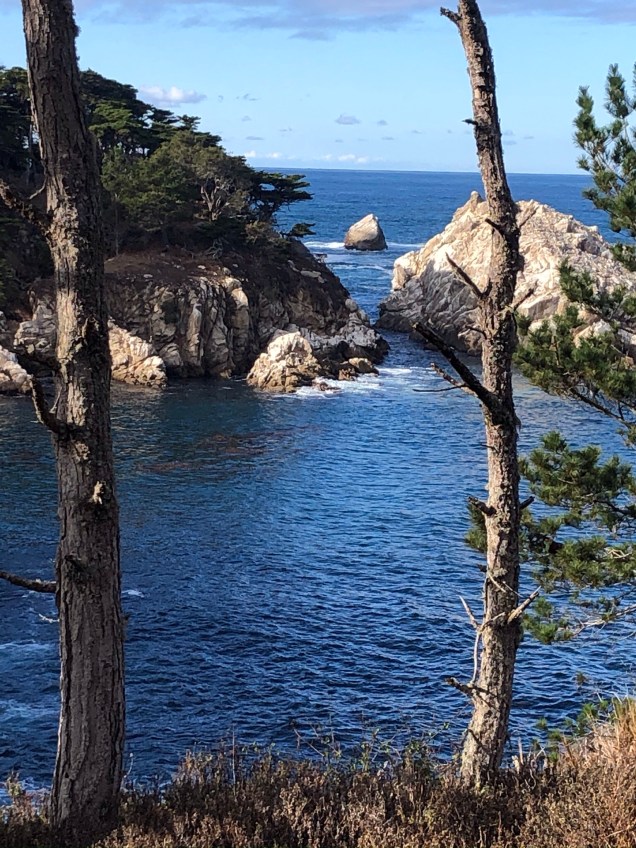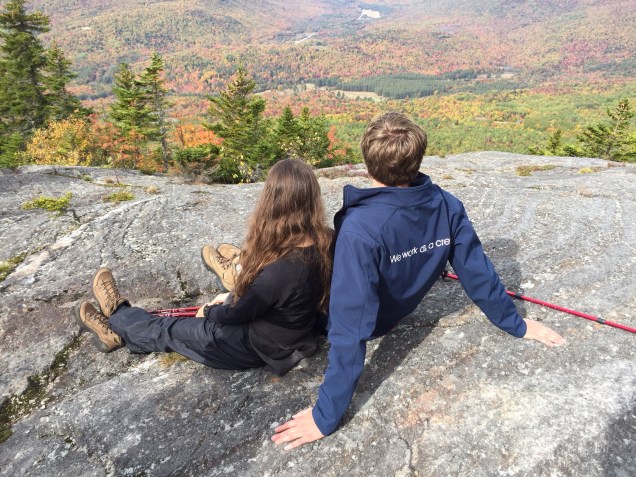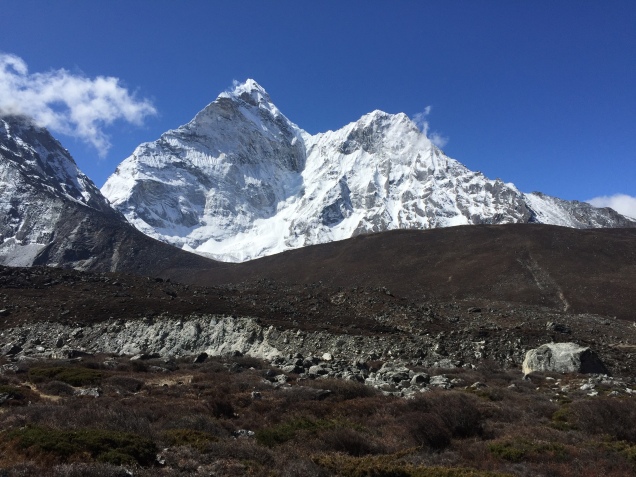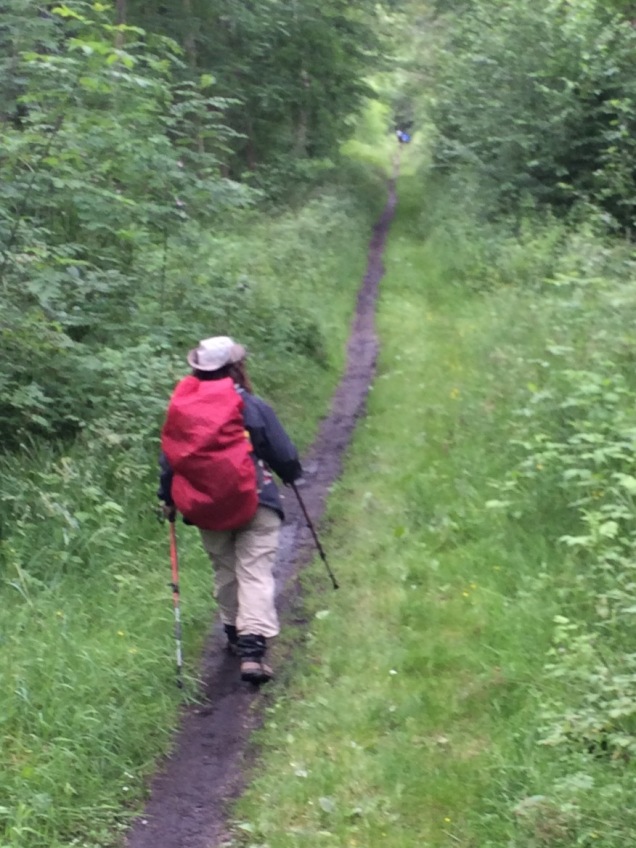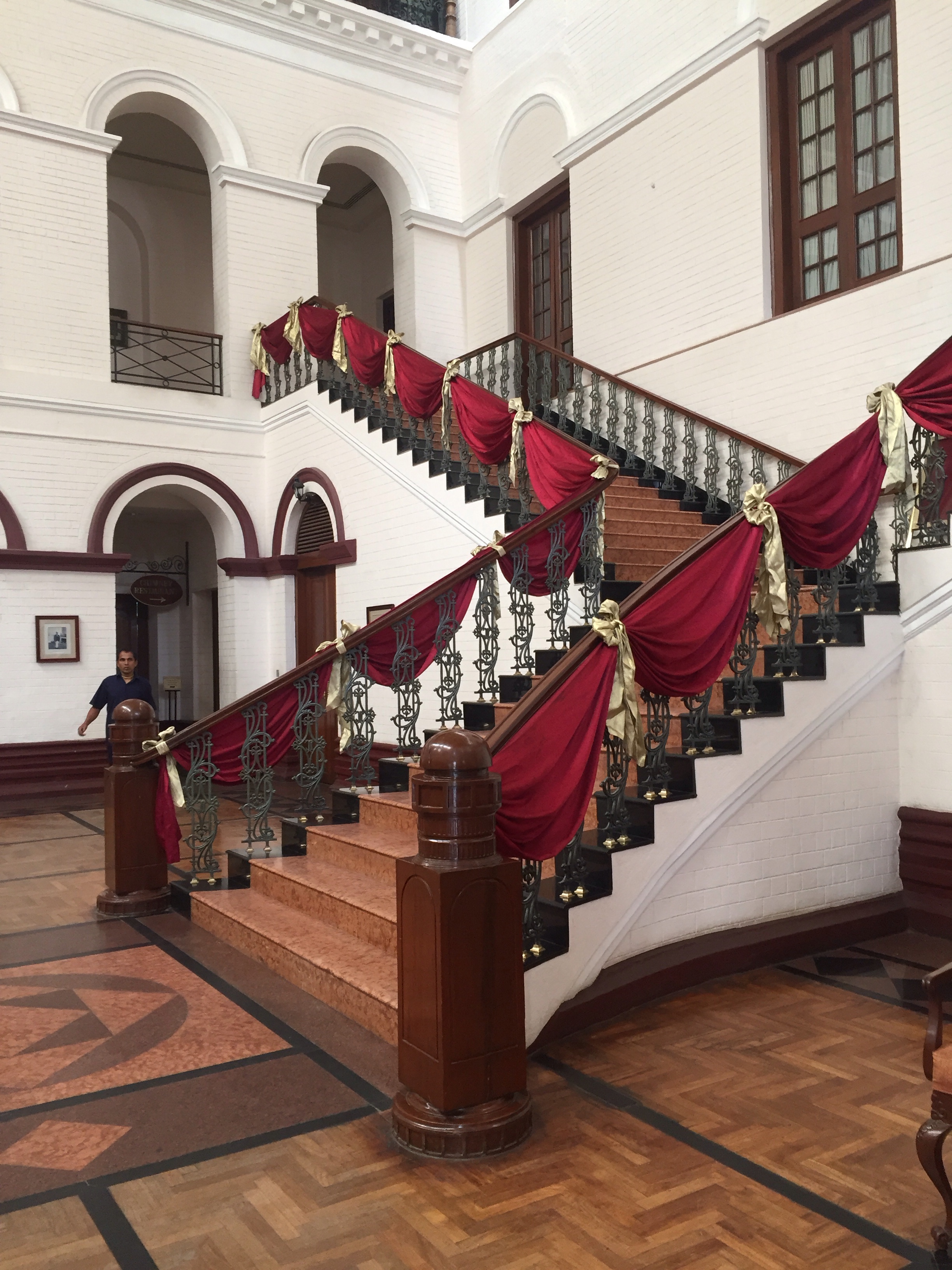Our multiple methods of transportation continued as our team moved camp from a nice hotel with electricity, toilets and running water to a compound consisting of six oil barrels converted to lodgings, several similarly converted cargo containers, and exactly three outhouses, one of which didn’t have a door. But it was more than made up for by the view from the outhouses (and the entire area) of mountain peaks and green valleys.
The Outhouse:

The View From the Outhouse

To get to the Barrels, we loaded our luggage, ourselves and food and water into a taxi to the starting point of a gondola that took us over the valley and up to the first level of ski runs. Then we unloaded and reloaded and did exactly the same thing for yet another gondola ride higher up. And finally, for a grand finale, we loaded one piece of luggage onto each chair of a single person chair lift – whose only safety feature was a metal bar that loosely swung in front of the rider as he or she soared hundreds of feet over the snow covered ground. The bar actually created more danger because it gave an illusion of slight security, encouraging the rider to lean forward to see the sights below.
Our team was assigned Barrel #3, altitude 3900 meters (12,795 ft.). My husband and I had the first two “beds,” which were cots on each side of the barrel with a bedspread and pillow. There was a half wall (no door) dividing this area from the remainder, in which there were four more cots, two on each side, where our teammates and guide slept. Cozy quarters, to say the least. Prior residents had stuck all sorts of things on the walls, ranging from guiding company stickers to car ads (a high-end Mercedes). Each day, at some unexpected moment, electricity would suddenly be turned on for a couple of hours.
Home sweet home: in the top picture our backs are to the entry way to the barrel. We are facing the other cots.


Breakfast, lunch and dinner were all served in a converted cargo container a few feet from our barrel, although it was still treacherous to navigate the icy snow and broken concrete slabs between the barrel and container. Breakfast – oatmeal (and lots of it), unspecified sausage, cheese, bread, fruit, yoghurt. Lunch – soup, sausage, cheese, bread, and the ubiquitous cucumber and tomato salad. Dinner – more soup, entree of different stews and potatoes or pasta, and salad. Our cook’s name was Olga. At each meal, including breakfast, there was a bowl of chocolates.
The first day in the barrels we hiked with our Russian guide Alec – who seemed to know everyone on the mountain – up to the Diesel Hut for acclimatization. It’s a complex of three or four “buildings” and one stone hut that campers can rent. It was built on the site of the old Priut 11 hut that burned in 1998. Renters or not, everyone is allowed to go in. It took us 2 hours to reach that spot the first day. We had cut that down to 45 minutes by day 3. Tells you something about the body making more red blood cells at altitude.
The second day we hiked one level further, up to the Pastukhov Rocks, at about 4700 meters (15,420 ft.). By now we were feeling much more adept with our crampons, plastic boots, and poles. The two members of our team who were going to ski down Elbrus, in the meantime, were practicing skiing and “skinning” up the mountain.

All was going smoothly until the dread zipper problem reared its ugly head again. To understand this paragraph fully, you must read the earlier entry, Gear Check #2 or How to Break Your Equipment Before You Start. Just as we were about to leave for the Pastukhov Rocks, the side zipper pull on my oh so expensive hard shell, full side zippered pants separated itself from the zipper yet again. Our resourceful guide safety pinned the offending area together, but it wasn’t enough to survive a crash and burn slip and fall on the snow. There’s a wonderful photo of me (that shall not be posted here) having a Janet Jackson wardrobe malfunction moment on the mountain. Fortunately I was wearing long underwear. Later that night our guide was able to fix the zipper – which required the use of pliers from his ski repair kit – but I was under strict instructions not to touch those side zippers again.
Day 3 in the barrels was supposed to be a rest day with some skills training. We spent an hour or so in the morning just below the Diesel Hut working on self arrest, footwork, what it’s like to be roped, and how to use an ice axe. Finally getting to use all the gear, the acquisition of which had consumed so much time, money and soul (at least in the part of my husband). I found I actually remembered some of the lessons from our unsuccessful Mt. Hood attempt. We spent a leisurely rest of the day trying to sleep, reading, etc. By now the barrel was starting to feel like home.
Although theoretically the two days for the summit attempts were days 4 and 5, everything in the mountains is about change. Because the weather looked good for Monday night into Tuesday morning, our guide made the decision we should attempt the summit a day early, and have an extra day in the Valley.
Monday night we had a huge 5 pm dinner of chicken and pasta. Although I was pretty well acclimatized by then I had lost my appetite and had to force myself to eat. We had spent much of the day packing our packs for summit day, no easy feat, and were supposed to be ready for a 1:15 am wake up call to have breakfast and get on yet another mode of transportation – a snowcat – that would take us to the Pastukhov at 3 am. By 7 pm we were all in bed, headlamps turned off, trying to sleep.
